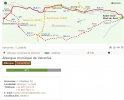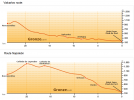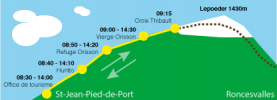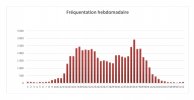But you posted your comment in a thread relating to Orisson which is not related to Santiago. Unfortunately this sort of hiped chatter is unhelpful for people who dont yet have the experience to tell the difference between numbers in Santiago de Compostela and St. Jean.
Oh, relax already - everyone just chill!
According to El Correo Gallego today:
https://www.elcorreogallego.es/sant...1-000-peregrinos-diarios-llegan-85547940.html
Pilgrim arrivals at Santiago are already over 1,000 daily. The number of arrivals wlll shoot higher this week and next. I predict this will be a very busy season.
Everyone might as well start making adjustments and change plans as you are able. ALWAYS have a Plan B, for a planned daily stage and for accommodations at the end of that stage.
When you consider that more than 50% of ALL pilgrims walk the
Camino Frances, and that around half of those start BEFORE Sarria, with the largest portion starting at the beginning - St. Jean Pied de Port (SJPdP), perhaps you can understand where the concern about the first few daily stages out of SJPdP come from.
View this as a classic "Pig in the Python" process situation. The Camino ingests all these new pilgrims at SJPdP, and at other cities early on (Pamplona, Logrono, etc.) you need to evaluate the flow and alter your expectations accordingly. Avoid being at one of those starting places on a Friday or Saturday and will have a more relaxed Camino. Keep the proverbial "Pig" ahead or behind you.
If you do a Google search for "pilgrim office saint jean pied de port," you will get - among other things - a side panel showing the distribution of busy times of the day and week. That is an indicator of the pilgrim volume coming out of SJPdP - much of it the following day.
I am not aware that the pilgrim office at SJPdP publishes online, daily departure numbers - or the number of new pilgrims who registered at the office - I wish they would.
THAT would be a very useful number indeed. MonaSP - you listening in? One could presume that most of those folks will actually depart the following morning. You could then extrapolate the progress of this "peloton" along the
Camino Frances. After all, pilgrims have been making this journey for more than 1,200 years. I am confident that there are some good patterns within the daily distribution of pilgrim walkers.
In my professional experience, it is a classic queuing theory problem. Someone with more smarts than me, could even model the resulting flow and distribution for the ensuring five weeks or so it takes most of the pilgrims to make it to Santiago from SJPdP.
It is all very interesting.
Hope this helps the discussion.
Tom



































